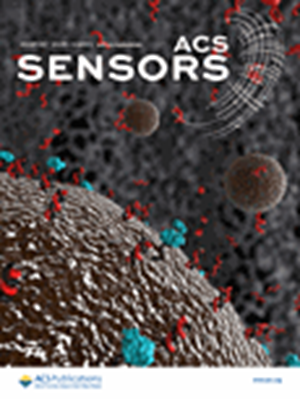等离子体基板免疫传感器的机器学习和光学显微镜图像分析:在SARS-CoV-2病毒检测中的应用
IF 9.1
1区 化学
Q1 CHEMISTRY, ANALYTICAL
引用次数: 0
摘要
在本文中,我们介绍了一个由光学显微镜图像分析系统与机器学习相结合的诊断平台。通过处理等离子体衬底上免疫传感器的图像,证明了其在检测浓度低至每毫升1 PFU(斑块形成单位)的SARS-CoV-2病毒颗粒方面的功效。这种高性能是通过使用支持向量机(SVM)算法和MobileNetV3_small卷积神经网络(CNN)模型对图像进行分类实现的,该模型的准确率为91.6%,特异性为F1分数为96.9%。值得注意的是,该方法能够检测到的SARS-CoV-2浓度比使用相同免疫传感器的局部表面等离子体共振(LSPR)传感所达到的检测极限低1000倍。同样重要的是,使用MobileNetV3_small模型和随机森林算法对对照类和阳性类进行二元分类,在SARS-CoV-2浓度低至1 PFU/mL时,准确率达到96.5%。在如此低的浓度下,直接筛查新感染患者可能是可行的。在支持实验中,我们验证了纹理是不同SARS-CoV-2浓度下拍摄的图像可区分的主要因素,这表明ML和图像分析的结合可以应用于任何基于吸附检测机制的生物传感器。本文章由计算机程序翻译,如有差异,请以英文原文为准。

Using Machine Learning and Optical Microscopy Image Analysis of Immunosensors Made on Plasmonic Substrates: Application to Detect the SARS-CoV-2 Virus
In this article, we introduce a diagnostic platform comprising an optical microscopy image analysis system coupled with machine learning. Its efficacy is demonstrated in detecting SARS-CoV-2 virus particles at concentrations as low as 1 PFU (plaque-forming unit) per milliliter by processing images from an immunosensor on a plasmonic substrate. This high performance was achieved by classifying images with the support vector machine (SVM) algorithm and the MobileNetV3_small convolutional neural network (CNN) model, which attained an accuracy of 91.6% and a specificity denoted by an F1 score of 96.9% for the negative class. Notably, this approach enabled the detection of SARS-CoV-2 concentrations 1000 times lower than the limit of detection achieved with localized surface plasmon resonance (LSPR) sensing using the same immunosensors. It is also significant that a binary classification between control and positive classes using the MobileNetV3_small model and the random forest algorithm achieved an accuracy of 96.5% for SARS-CoV-2 concentrations down to 1 PFU/mL. At such low concentrations, straightforward screening of newly infected patients may be feasible. In supporting experiments, we verified that texture was the main contributor to the distinguishability of images taken at different SARS-CoV-2 concentrations, indicating that the combination of ML and image analysis may be applied to any biosensor whose detection mechanism is based on adsorption.
求助全文
通过发布文献求助,成功后即可免费获取论文全文。
去求助
来源期刊

ACS Sensors
Chemical Engineering-Bioengineering
CiteScore
14.50
自引率
3.40%
发文量
372
期刊介绍:
ACS Sensors is a peer-reviewed research journal that focuses on the dissemination of new and original knowledge in the field of sensor science, particularly those that selectively sense chemical or biological species or processes. The journal covers a broad range of topics, including but not limited to biosensors, chemical sensors, gas sensors, intracellular sensors, single molecule sensors, cell chips, and microfluidic devices. It aims to publish articles that address conceptual advances in sensing technology applicable to various types of analytes or application papers that report on the use of existing sensing concepts in new ways or for new analytes.
 求助内容:
求助内容: 应助结果提醒方式:
应助结果提醒方式:


